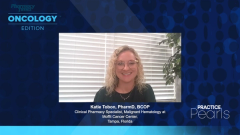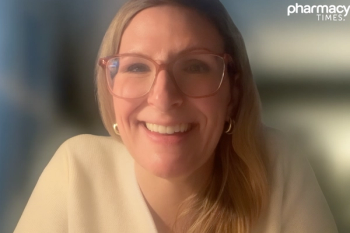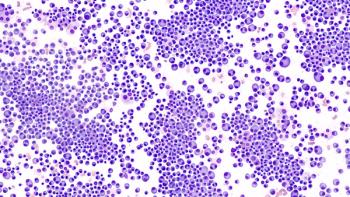
Challenges in CLL Therapy
Lisa Nodzon, PhD, ARNP, AOCNP, and Javier Pinilla-Ibarz, MD, PhD, review challenges in CLL therapy, including cost barriers.
Episodes in this series

Javier Pinilla-Ibarz, MD, PhD: Let’s discuss the challenges in CLL [chronic lymphocytic leukemia] therapy. Where and how do clinicians interpret and find new data associated with the treatment of CLL.
Lisa Nodzon, PhD, ARNP, AOCNP: Even in the setting of COVID-19, it’s been a little difficult for those of us who have attended scientific conferences, where everything has gone electronic. Most of us get our scientific information from peer-reviewed journals as well as the scientific conferences,…and there’s still a host of information that can be gained from them. Of course, we have real-world studies, which give us more information than we can often obtain from clinical trials. Clinical trials are very valuable, but we recognize that certain patients are excluded from clinical trials, which are often not befitting of the patients we see in the real world who may have more comorbid conditions. Real-world data, studies of cohort, and observational studies provide us with valuable information for data on patients, particularly when they’re on these novel therapies.
Javier Pinilla-Ibarz, MD, PhD: By talking about these novel therapies, how we address the cost challenge, and how we can overcome them may be something that we discuss in the practice. It’s important to put it in the context of our treatment. What do you think is the main challenge with these new targeted medications?
Lisa Nodzon, PhD, ARNP, AOCNP: Cost is a big one. I’d say the predominant patient population that we see is retired individuals. The median age of diagnosis is around 65 to 70 years. For our Medicare patients, it’s often more difficult for them if they’re on fixed incomes. Many of our patients have to seek out pharmaceutical assistance or Patient Access Network Foundation assistance. Cost can become an issue for the patients. If they often have to seek financial assistance, our specialty pharmacists come into play and assist our patients with that paperwork, which often has to be filled out every 6 or 12 months. Cost is one of the greatest challenges with these novel agents.
Javier Pinilla-Ibarz, MD, PhD: You hit them all. Another question is if there are educational barriers with new data presented in the medians? Most of the time, our new information for new therapeutic strategies comes from meetings, like the recent ASH [American Society of Hematology Annual Meeting], where new data are presented. But the important point is how these data from meetings can be extended and expanded through different community that may not be familiar to these medians, and definitely, educational videos, interviews, and CME programs across the board are important. With the virtual technology, this is one of the advantages: people can watch short programs with new therapeutic strategies rather than have to be live in one of these review meetings. It’s something we’re learning as we go, and we’re living in this hybrid system, so we can go to live meetings and discuss in virtual settings at the same time.
Transcript Edited for Clarity
Newsletter
Stay informed on drug updates, treatment guidelines, and pharmacy practice trends—subscribe to Pharmacy Times for weekly clinical insights.





















































































































































































































